Florida is home to some of the most stunning bird species in the country, including unique red birds in Florida that you may encounter while exploring the state’s beautiful outdoors. If you’re an avid birder or simply a nature lover, you’ll be delighted to know that we’ve put together a comprehensive ID guide featuring eight types of the most striking red birds found only in Florida.
Our guide is packed with detailed information about each bird species, including their appearance, habits, and habitat preferences. Additionally, we’ve created a visual feast of beautiful photos to help you identify these red birds in their natural environment.
Key Takeaways
- Discover and learn about eight stunning types of red birds found in Florida.
- Examine information about each bird’s unique appearance, behavior, and habitat preferences.
- Browse through our collection of eye-catching photos to assist in identifying these creatures.
- Find out where to find these red birds in Florida’s various hotspots.
- Learn how to contribute to red birds’ conservation and protect them effectively.
Types Of Red Birds in Florida
1. Northern Cardinal (Red Birds in Florida)
The Northern Cardinal is a stunning bird species with a vibrant red plumage and a distinctive crest on its head. This bird can frequently be spotted in backyards and parks throughout Florida, making it a familiar sight to many. With a length of 8-9 inches (21-23cm) and a wingspan of 10-12 inches (25-31cm), it’s hard to miss this charismatic bird.
Males have a bright red plumage and a black face that contrasts with their iconic crest, while females have a more subdued appearance with a reddish-brown hue and a gray crest.
Cardinals are territorial birds that can often be observed defending their territory from other birds. Their diet consists mainly of seeds and fruits, but they also eat insects and other invertebrates. They prefer to nest in dense shrubs and bushes, building their nests with twigs, leaves, and grass.
If you want to attract Northern Cardinals to your backyard, try offering them a mix of sunflower seeds, safflower seeds, and peanuts. These birds are frequent visitors to bird feeders, and their beautiful plumage adds a splash of color to any garden.
2. Red-headed Woodpecker (Red Birds in Florida)
Florida’s forests and woodlands are home to a striking red bird known as the Red-headed Woodpecker. This species boasts plumage with a bold, crimson head that makes it easy to spot.
The Red-headed Woodpecker is known for its acrobatic foraging behavior that sees it summon insects by drumming on trees with its beak. It also has a distinctive call that sounds like a nasal cackle.
If you want to spot Red-headed Woodpeckers in Florida, look for them in open woodlands, dead trees, and forest edges. These woodpeckers have a widespread distribution and can be observed in numerous state parks and wildlife refuges.
The Characteristics of the Red-headed Woodpecker
| Traits | Description |
|---|---|
| Size | 9.8–10.6 in (25–27 cm) in length, with a
wingspan of 16.5–17.3 in (42–44 cm) |
| Habitat | Open and semi-open woodlands, dead trees, f
orest edges, parks, and golf courses |
| Appearance | Distinctive large, cherry-red head, black wings,
and back with a white belly and rump; males and females are similar in appearance but can be differentiated by their behavior and calls |
| Diet | A mix of insects, nuts, seeds, and fruit |
| Behavior | Acrobatic foraging behavior, including drumming
on trees with its beak to summon insects; distinctive nasal cackling call |
The Red-headed Woodpecker is a unique bird species that is worth observing if you’re in Florida. Its crimson head and distinctive behavior make it an excellent addition to any birder’s list of birds to spot in the Sunshine State.
Must Read: Can Parakeets Talk?
3. Purple Finch (Red Birds in Florida)
The Purple Finch, with its beautiful reddish plumage, is a common sight in Florida during winter months. Though not entirely red, its coloration qualifies it as one of the red birds in Florida. You can identify the male Purple Finch by its reddish crown and breast, while the female has a more muted coloration.
Aside from its stunning appearance, this finch species is known for its melodious song, which you can hear in their winter breeding grounds. Their unique breeding habits involve concealing their nests in dense foliage, usually found in coniferous trees.
To distinguish the Purple Finch from other finch species, pay attention to its size, shape, and coloration. Compared to the House Finch, the Purple Finch has a bulkier body, a notched tail, and a more prominent bill. Their coloration is also distinctive, with the Purple Finch having a reddish wash on its head, breast, and back.
Identification Tips for Purple Finch
| Common Name | Purple Finch |
|---|---|
| Scientific Name | Haemorhous purpureus |
| Size | 5.5-6 inches |
| Weight | 0.8-1.1 oz |
| Coloration | Reddish crown and breast, brown back,
notched tail, prominent bill |
| Behavior | Feeds on seeds, fruit, and insects,
conceals nests in coniferous trees |
Next time you’re birding in Florida during the winter months, keep an eye out for the Purple Finch’s distinctive coloration and listen for their melodious song. With this guide, you’ll be able to identify them and appreciate their unique breeding habits in their winter breeding grounds.
4. House Finch (Red Birds in Florida)
If you’re looking for a splash of red in your backyard, the House Finch is a bird to keep an eye out for. This adaptable finch species has successfully established populations across the state of Florida, and they can be frequently seen visiting feeders or perching on urban structures.
The House Finch has several varieties, including the red morph males with striking red coloring on their head, chest, and rump. The female varieties are less flashy, with brown-streaked plumage. When it comes to behavior, House Finches are known for their acrobatic abilities, clinging upside-down on perches to reach their food.
To attract House Finches to your backyard, provide them with a feeder filled with black oil sunflower seeds or nyjer seeds. As with any bird, ensure that the feeder is cleaned frequently to prevent the spread of disease.
5. Scarlet Tanager (Red Birds in Florida)
The Scarlet Tanager is a magnificent migratory red bird that can be spotted in Florida during its spring and fall migration. This species flaunts a bright red plumage with contrasting black wings, adding a touch of elegance to any habitat.
If you’re hoping to catch a glimpse of these worldly travelers, your best bet is to visit forests and woodlands during the brief period they are in the state. Scarlet Tanagers often prefer to nest in mature forests with a heavy canopy and ample foliage for cover, so keep your eyes peeled for any treetops they might inhabit.
“The Scarlet Tanager is a stunning bird species that truly stands out in its bold red plumage during migration periods.“
How to Spot a Scarlet Tanager?
While a Scarlet Tanager’s striking red and black coloring is hard to miss, try and listen for their distinctive song, which sounds like a robin’s but is shorter and clearer. You can also identify this species by their characteristic ‘pit-tuck’ call, which they make frequently while foraging.
Their habit of moving through dense foliage and treetops can make spotting these elusive birds a bit challenging, but their vocalizations can help you pinpoint their location and improve your odds of a successful sighting.
6. Red-bellied Woodpecker (Red Birds in Florida)
If you’re exploring Florida’s forests and woodlands, you’re likely to encounter the Red-bellied Woodpecker. Despite its name, this species sports a vibrant red cap that often overshadows the red wash on its belly.
The Red-bellied Woodpecker’s striking appearance is just one aspect of its fascinating characteristics. This bird species is known to have a varied diet, feeding on insects, fruits, and seeds. They also have intricate nesting habits, with both males and females involved in the excavation and maintenance of their nest cavities. By exploring the following features of the Red-bellied Woodpecker, you will learn how to identify this species and appreciate the unique role it plays in Florida’s ecosystem.
Appearance
The Red-bellied Woodpecker is a medium-sized bird, reaching up to 9.5 inches in length and weighing around 2.2 ounces. Males and females are similar in appearance, with a red cap, gray face, and intricate black-and-white stripes on their back. The red wash on their belly is often barely visible, and their wings showcase black-and-white patterns with hints of blue-green.
Habitat and Distribution
The Red-bellied Woodpecker is a year-round resident of Florida’s forests and woodlands. They tend to occupy deciduous forests, pine forests, and mixed forests, preferring habitats with large trees for nesting and foraging. These birds can also be found in suburban areas with mature trees and ample food sources.
Diet
The Red-bellied Woodpecker has a varied diet, feeding mainly on insects, fruits, and seeds. They forage by either excavating crevices in tree bark to find insects or by probing the ground and foliage for fruits and seeds. Their diet can also include small amphibians and reptiles.
Nesting and Behavior
The Red-bellied Woodpecker has intricate nesting habits, excavating and creating nest cavities in dead or decaying trees. Both males and females take turns incubating the eggs and feeding the hatchlings. In some cases, these woodpeckers will also usurp nests of other bird species, enlarging the cavities to fit their size.
When it comes to behavior, the Red-bellied Woodpecker is known for its drumming, tapping, and calling sounds. Males will also engage in drumming behavior to attract mates and establish their territory during nesting season.
Identification Tips
If you’re looking to identify the Red-bellied Woodpecker among other woodpecker species, there are a few distinguishing features to look for. Their red cap and intricate black-and-white stripes are a good starting point for identification, along with their preference for mature trees with large diameters for excavating and nesting.
Also Visit: Different Types of Conures
7. Painted Bunting (Red Birds in Florida)
If you’re looking for a red bird that’s sure to make a statement, look no further than the Painted Bunting. These stunning birds display a vibrant mix of red, blue, and green plumage that’s sure to catch your eye.
The males are particularly striking with their brilliant colors, while the females have a more subdued appearance with greenish-yellow plumage. These birds are known for their unique breeding behavior, with males often attracting multiple mates and doing most of the brooding.
You can find Painted Buntings in Florida during the breeding season, typically from late April to early September. They prefer dense shrubbery habitats, and you’re more likely to spot them in the central and southern parts of the state.
Keep an eye out for these colorful birds during your next birdwatching trip in Florida. Their unique appearance and habits make them a rewarding find for any nature enthusiast.
8. Ruby-throated Hummingbird
When it comes to red birds in Florida, the Ruby-throated Hummingbird may not be entirely red, but it certainly has a striking feature that deserves attention. The male of this species sports a vivid red throat patch that shines bright in the sunlight. These tiny birds can be spotted in Florida during their spring and fall migration, making them a real treat for birdwatchers.
Despite their diminutive size, Ruby-throated Hummingbirds are fascinating creatures with unique behaviors and feeding adaptations. Did you know they have the highest metabolism of any bird species? That means they need to consume half their body weight in nectar every day! Learn more about these captivating red birds in Florida and their impressive survival strategies.
Other Red Birds in Florida
Florida offers a diverse range of red bird species, and the Sunshine State is home to more than just the eight highlighted birds in this guide. Below we will explore two other red birds in Florida:
| Summer Tanager | Cardinal Grosbeak |
|---|---|
| The Summer Tanager is a medium-sized bird
with a brightly colored male that has a red plumage while the female is yellowish-green. They can be found in the South of Florida during late April and into May, and their unique songs and frequent flights make them easy to spot. Summer Tanagers can often be found in woodland habitats where they mainly feed on insects. |
The Cardinal Grosbeak is a medium-sized bird that
can be found in Florida’s coastal scrub habitats. They have a dark-red plumage with a white bill and can be identified by their large conical bills meant for crushing seeds. Cardinal Grosbeaks are often seen in pairs and breed from May to July. |
Next time you are out birdwatching in Florida, keep an eye out for these lesser-known red birds. You may be pleasantly surprised.
Birding Hotspots in Florida for Red Birds
Florida is a bird watcher’s paradise, with an abundance of birding hotspots scattered throughout the state. If you’re looking to spot some beautiful red birds, you’re in luck! Here are some of the best locations to see them:
| Location | Red Bird Species |
|---|---|
| Merritt Island National Wildlife Refuge | Northern Cardinal, Red-headed Woodpecker,
Painted Bunting, Scarlet Tanager |
| Everglades National Park | Northern Cardinal, Red-bellied Woodpecker,
Ruby-throated Hummingbird |
| Big Lagoon State Park | Red-headed Woodpecker, Summer Tanager, Scarlet Tanager |
| Paynes Prairie Preserve State Park | Northern Cardinal, Purple Finch, House Finch |
| Fort De Soto Park | Painted Bunting, Scarlet Tanager, Northern Cardinal |
These are just a few of the many birding hotspots in Florida where you can observe red birds in their natural habitat. Remember to bring your binoculars and patience, and always follow proper bird watching etiquette to avoid disturbing the birds.
Red Birds Conservation in Florida
If you are an avid birdwatcher and have had the privilege of observing the vibrant red birds of Florida, you know how important it is to protect these beautiful creatures and their habitats.
Florida is home to several endangered and threatened red bird species, including the Red-cockaded Woodpecker, the Florida scrub jay, and the Bachman’s Sparrow. Habitat loss, climate change, and human activities, such as development and agriculture, are all major threats to these red birds and their survival.
Fortunately, various conservation efforts are underway in Florida to protect these stunning red bird species and their ecosystems. Organizations like the Audubon Society, Florida Fish and Wildlife Conservation Commission, and the Nature Conservancy are working to conserve and restore habitats and educate the public on the importance of red bird conservation.
You can contribute to these conservation efforts by supporting local conservation organizations, reducing your carbon footprint, and avoiding the use of pesticides and other harmful chemicals that can harm red birds and their habitats. You can also participate in citizen science projects and report red bird sightings to help researchers monitor populations and track changes.
By taking action to protect red birds in Florida, you are helping to conserve the state’s natural beauty and biodiversity for future generations.
FAQ’s About Florida Red Birds
Q: What are the eight types of red birds in Florida?
A: The eight types of red birds in Florida are the Northern Cardinal, Red-headed Woodpecker, Purple Finch, House Finch, Scarlet Tanager, Red-bellied Woodpecker, Painted Bunting, and Ruby-throated Hummingbird.
Q: Can you provide an ID guide with photos for these red birds?
A: Yes, we have a comprehensive ID guide with photos for each of the eight types of red birds in Florida. You can find detailed information and stunning photos to help you identify these red birds in their natural habitat.
Q: What is the Northern Cardinal’s appearance and behavior?
A: The Northern Cardinal is a vibrant red bird with a distinctive crest. They are frequent visitors to backyards and parks in Florida. Learn more about their appearance, behavior, and habitat preferences in our dedicated section.
Q: Where can I spot the Red-headed Woodpecker in Florida?
A: The Red-headed Woodpecker can be found in forests and woodlands throughout Florida. They are known for their acrobatic foraging behavior and distinctive call. Discover more about their characteristics and where to spot them in our informative section.
Q: Are Purple Finches found in Florida during the winter months?
A: Yes, Purple Finches can be found in Florida during the winter months. While they may not be entirely red, their reddish plumage earns them a spot in our guide. Learn about their unique breeding habits and how to identify them among other finch species.
Q: What are the varieties and behavior of House Finches in Florida?
A: House Finches are adaptable birds that have established populations in Florida. They can often be seen at feeders and in urban areas. Find out more about the varieties and behavior of House Finches in our dedicated section.
Q: When do Scarlet Tanagers pass through Florida?
A: Scarlet Tanagers are migratory red birds that pass through Florida during their spring and fall migration. Their vibrant red plumage contrasts beautifully with their black wings. Discover their preferred habitats and how to spot them during their brief visits.

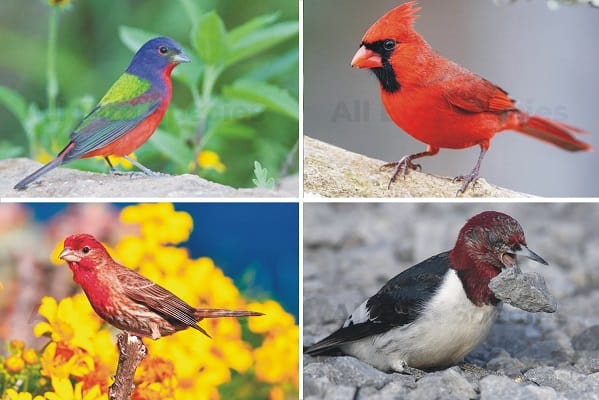
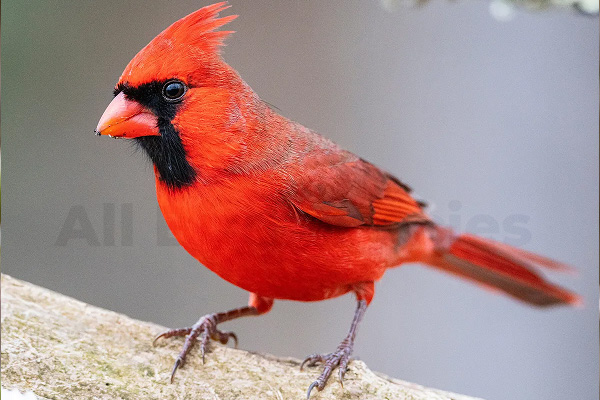





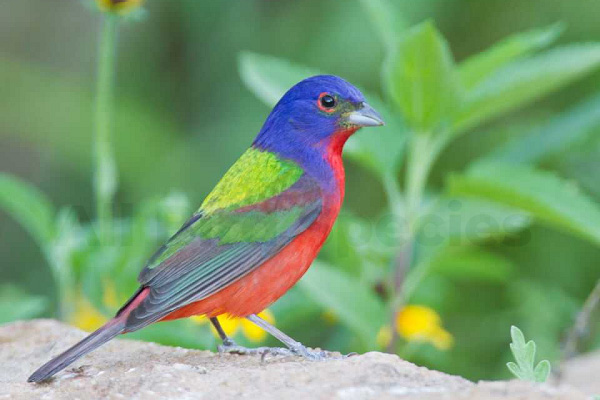

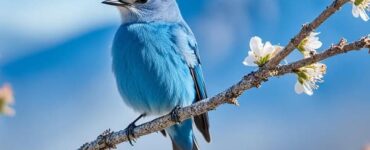
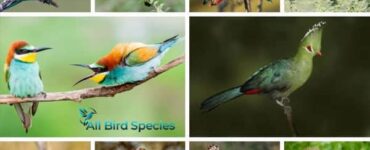
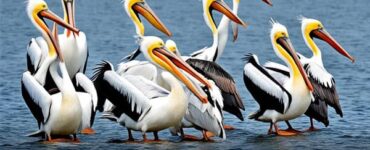
Add comment